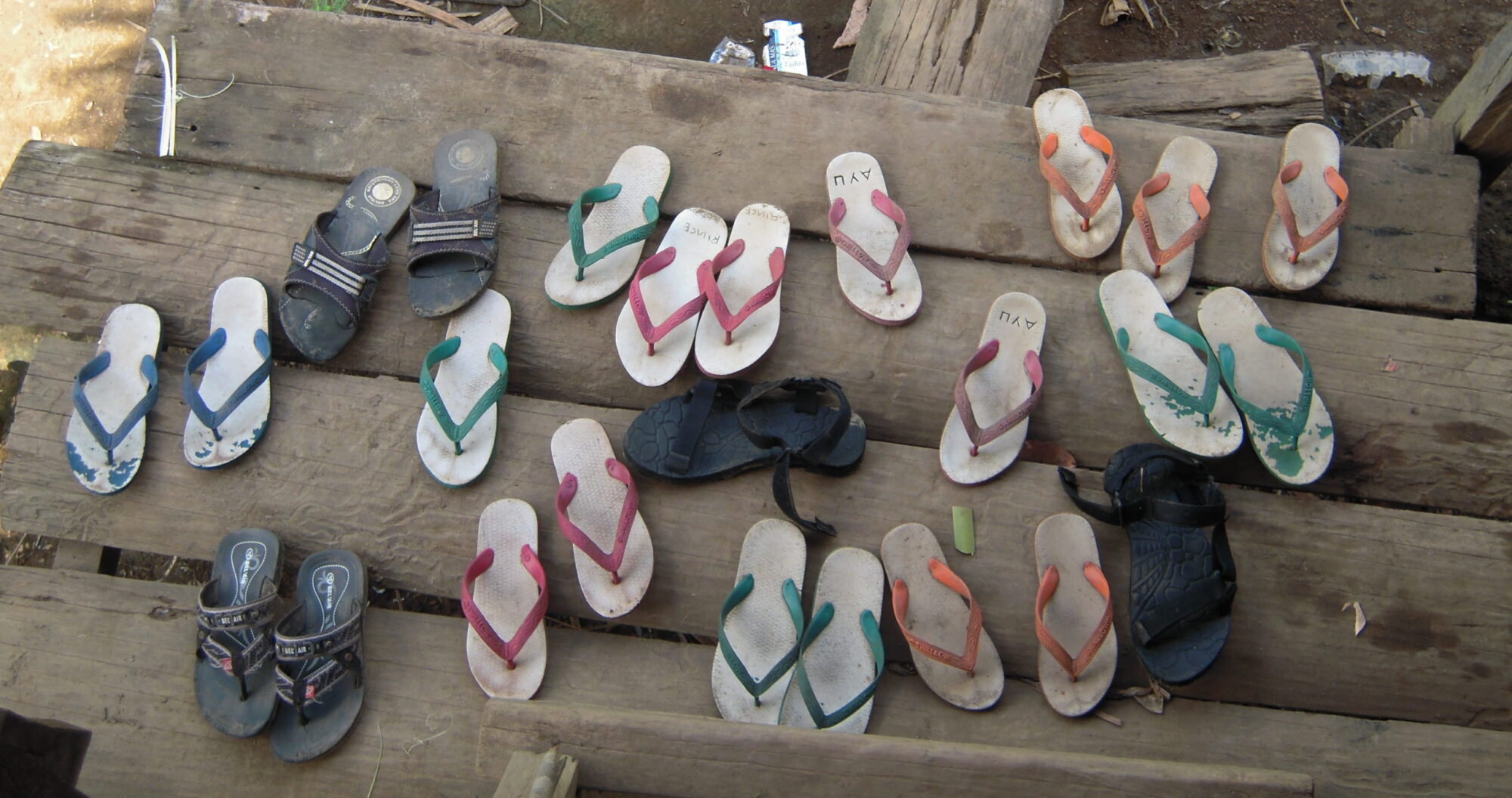This is a bamboo zither, like those present throughout Southeast Asia, including in Malaysia (Roseman 2008: 318) and Vietnam (Nguyễn 2008: 300). Before the arrival of the gongs, this was the shamanic instrument par excellence, and its use in shamanic rituals can still be found among the Temiar (Roseman 1993: 131). The connection between the bamboo zither and the gong can be found in many other Southeast Asian populations such as the Jarai of Vietnam: “The sophisticated Jarai version (gong) is played polyphonically to imitate the gong ensembles” (Nguyễn 2008: 300) and the Philippines (Canave-Dioquino, Santos and Maceda 2008: 433). Among the Wana people, the instrument is more closely linked to drums; in fact, Wana people talk about the tetebua as a drum and they use the word tamburu to refer to a slightly different version of this instrument.
Apa Ede told me: With a big bamboo it sounds like a drum.
The instrument is made of bamboo, preferably a short and wide piece that is conducive to obtaining a strong and deep sound, although I saw a variety of shapes and sizes ranging from 30 to 100cm in length. On the bamboo there are four strings that are raised by placing small bridges under them. Between two of these strings a hole is made that is covered by a bamboo lamella. This lamella has its ends carved into the shape of a beak so that it can be hooked onto the two strings that support it. When struck, the lamella emits the same note as the two strings to which it is attached.
A side hole is engraved to improve the sound, but it is also used to store the sticks when the instrument is not being played. These sticks are the votu, which is made of bamboo and used to play the two lower strings, and the tumbai, which is made of wood and used to beat the central lamella and the two strings to which it is attached. The instrument can be played by two people at the same time, each with two sticks, and it can also be played with the fingers in a pizzicato style.
In the northern area of Morowali, there is a variation called the tamburu, which has the two strings on which the lamella is fixed replaced by a single large band made from the same bamboo. The repertoire of this instrument is much more varied and broad compared to those of the other instruments, even if the melodies are composed of only two notes.
This instrument is tuned to reproduce two notes: C3 (the lamella and the two strings attached to it) and F3 (the other two strings). It is possible that this two-note tuning is due to its ancient shamanic function, with monotonous music apparently well suited to triggering a process of dissociation of the self.
SHAMANIC MUSIC PLAYED ON TETEBUA
